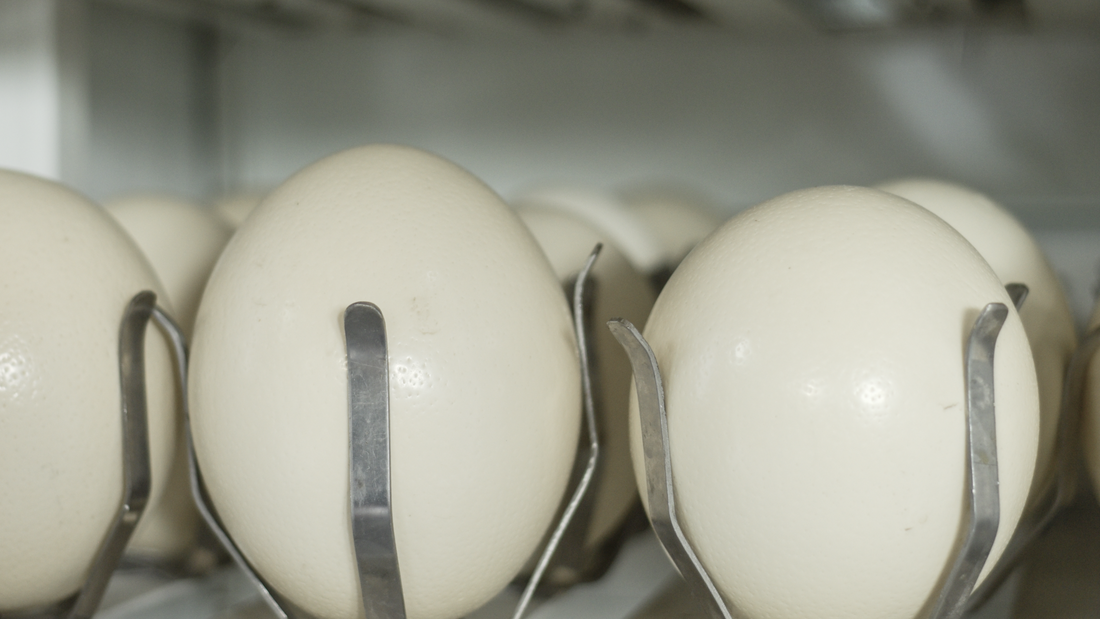
11 Steps for Handling Ostrich Eggs
Share
Proper egg storage is critical to maintain the viability and freshness of ostrich eggs. Ostrich eggs are much larger than chicken eggs and have a thicker shell, which requires specific handling and storage considerations. Here's 11 steps for handling ostrich eggs.

1. Collecting Eggs
Gather ostrich eggs daily to ensure they are as fresh as possible. Eggs left in the nest for extended periods may be more prone to damage or contamination.
2. Cleaning and Disinfecting
Before storage, gently clean any dirt or debris from the eggshell's surface. Use a soft cloth or brush, and avoid using water unless necessary. If an egg is soiled or contaminated, clean it with a mild, non-toxic disinfectant approved for egg cleaning. Make sure the disinfectant is safe for use on eggshells.
3. Inspecting for Damage
Examine each egg for cracks, holes, or any other signs of damage. Eggs with visible damage should not be stored, as they may not hatch successfully.
4. Positioning for Storage
Store ostrich eggs in a horizontal position with the large end slightly elevated. This orientation prevents the yolk from sticking to the inner membrane and helps maintain the air cell at the top.
5. Storage Environment
Choose a cool and dry storage area with a stable temperature between 45°F to 55°F (7°C to 13°C) and a relative humidity of around 75%. Avoid temperature fluctuations and direct sunlight, as they can negatively affect egg viability.
6. Storage Containers
Use suitable egg trays or cartons to hold the ostrich eggs during storage. Ensure the containers are clean, dry, and free from any contaminants.
7. Egg Rotation
For optimal hatchability, it's essential to rotate the eggs regularly during storage. Gently turn the eggs a quarter turn once or twice a day to prevent the yolk from sticking to the inner membrane.
8. Storage Duration
Ostrich eggs should ideally be incubated within 7 to 10 days of collection for the best hatching results. The longer eggs are stored, the lower their hatchability may be.
9. Monitoring Egg Development
During storage, occasionally candle the eggs to check for signs of fertility and embryo development. Infertile or undeveloped eggs can be removed from storage.
10. Hatching Incubation
Transfer the stored eggs to the incubator when ready for hatching. Maintain proper incubation conditions, including temperature, humidity, and ventilation, as specified for ostrich eggs.
11. Use Caution in Handling Processes
Avoid sudden movements or rough handling when transporting or placing eggs in storage to prevent damage.
By following these egg handling steps, ostrich farmers can maximize the chances of successful hatching and ensure the health and vitality of the developing ostrich chicks. Remember that successful egg storage is just one part of a comprehensive ostrich breeding program, which also includes proper breeding management, nutrition, and healthcare. Contact Superior Ostrich today if you're looking for help in your egg handling protocol!
